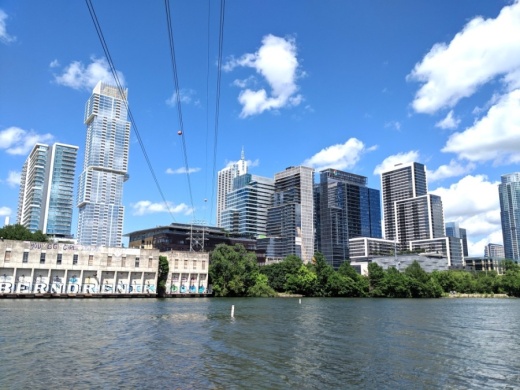Working from home appears to be a bigger part of the future than it seemed only a few months ago. Major local employers, such as Dell and Facebook, have said working from home would be a significant part of the companies’ futures. In a recent survey of 730 Austin workers, conducted in May by Movability Austin, roughly 75% of all participants said they would like to continue telecommuting, at least some of the time, after the pandemic subsides.
What this means for commercial office real estate in the future remains uncertain; however, experts said this week that they expect the net impact of the coronavirus on office space demand to be neutral.
“The narrative in the press that equates working from home to a drop off in office demand has been oversimplified and is not the right discussion,” Sean Coghlan of real estate firm JLL said at a Urban Land Institute Panel on June 24. “Job growth, work-from-home trends and de-densification will normalize themselves, and the net impact on office demand will be neutral.”
Coghlan said in a survey of 100 JLL clients, 90% of pre-pandemic workplace designs were still moving forward. However, he said employers have discussed changes in future design, going from 100-200 square feet per person to more than 250 square feet per person as companies try to de-densify workplaces.
What the office will represent to a company in the future could also change, said Jennifer Wenzel of the Teach Retirement System of Texas.
“The old office of the past was a place to access your computer and technology and carry out routine tasks. The new office will be a place to meet and collaborate and create a corporate culture,” Wenzel said during the ULI panel. “[There will be] more space demand as employers need more personal space but less space demand and more employees can and want to work from home.”
However, the commercial office space sector of the real estate is mostly on hold while the pandemic remains prevalent in Austin. Chad Marsh, a managing principal with Endeavor Real Estate Group, one of the largest development firms in the region, said “nothing” in office real estate is happening “unless it has to get done.”
Marsh confirmed activity is better in the suburban market as companies are seeking less dense areas. However, he said the activity has mostly been on the smaller side, and the local industry is not seeing large-scale deals.
Wenzel said although people get into the real estate business for the long-term nature of leases and stability, Marsh said landlords are beginning to consider more short-term leases to provide some more flexibility as the market tries to find clarity.
As far as major disruptions away from the office structure as it’s known today, Coghlan said it will take companies quarters and years to fully make these shifts.





